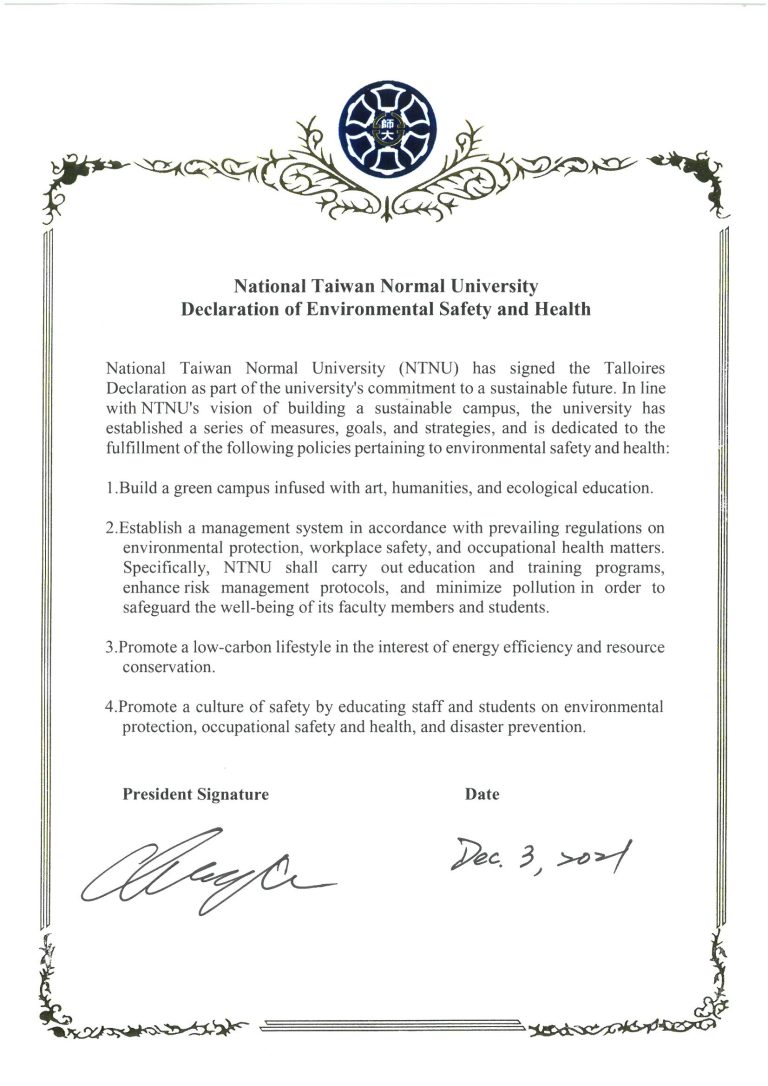2024 SDG 15 English
- 15.2.1 Activities Related to Sustainable Land Use
- 15.2.2 Policies Encouraging the Adoption of Sustainable Food Cultivation on Campus
- 15.2.3 Maintaining and Expanding Biodiversity in the Current Ecosystem
- 15.2.4 Ecological Education Program
- 15.2.5 Sustainable Management of Agricultural Land (Educational Outreach)
- 15.2.6 Sustainable Land Management in Tourism (Educational Outreach)
- 15.3.1 Sustainable Land Use, Protection, and Restoration (Policy)
- 15.3.2 Monitoring IUCN and Other Protected Species (Policy)
- 15.3.3 Integrating Local Biodiversity into Planning and Development
- 15.3.4 Minimizing the Impact of Invasive Species (Policy)
- 15.3.5 Collaboration for Shared Land Ecosystems
- 15.4.1 Drainage Guidelines and Standards
- 15.4.2 Policies for Reducing Plastic Waste
- 15.4.3 Hazardous Waste Disposal Policy
15.2.1 Activities Related to Sustainable Land Use
1. The Department of Life Sciences has a long-standing history and has made significant contributions to biodiversity conservation and sustainability research. Additionally, it has been actively advocating for and executing ecological conservation initiatives in Taiwan over the years. For instance, the “Preliminary Project for the Establishment of Long-term Socio-Ecological Core Observatories” was launched, selecting critical representative socio-ecological systems across Taiwan. The project has established a long-term socio-ecological core observation platform that enables researchers to collect and assess stable and ongoing environmental, ecological, and social data in essential regions of Taiwan. The platform serves as a solid scientific basis for evaluation and reference when facing challenges brought by change, ensuring the safety and sustainable use of the land.
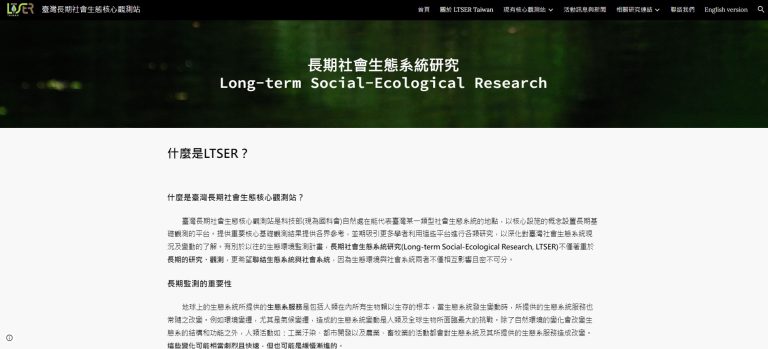
2. Coastal areas are also a key topic in sustainable land use. The “Ecosystem-Based Disaster Risk Reduction Strategic Assessment for Taiwan’s Coastal Environment” project proposes a new framework for coastal land governance through case studies and data evaluations of ecosystem management strategies. The “Geomorphodynamics and Evolution of the Cao-tuo Coastline Dunes in Taoyuan and Its Applications (III)” research project investigates the geomorphodynamics and geological evolution of the Cao-tuo coastal dunes in Taoyuan. This research establishes technical standards for studying the geological evolution of Taiwan’s coastal dunes, with the analytical results being applied to discussions on natural landscapes, conservation of ecological resources, and strategies for sustainable management. Additionally, the “Coastal Forest Structure and Land Crab Population Survey of Dakeng Valley in Suao, Yilan” project utilizes drone aerial photography combined with geographic information systems (GIS) to estimate the coastal forest area and identify dominant plant species within the forest community. Simultaneously, a survey of land crab species in the region was conducted to infer the species differences between forest transects. Based on these findings, recommendations were made to enhance the biodiversity of the coastal forest in Dakeng Valley, ultimately contributing to the sustainable development of the coastal community.
15.2.2 Policies Encouraging the Adoption of Sustainable Food Cultivation on Campus
The University has long been committed to the health and well-being of students and staff, organizing initiatives to promote sustainable plant-based diets and creating a campus vegetarian food map for reference. It also actively encourages campus vendors to offer low-carbon vegetarian menu options. Additionally, the “Bidding Guidelines for Outsourced Restaurant Operations” clearly stipulate that suppliers should prioritize the use of the following products for all food and ingredients provided:
1. Agricultural products are traceable through systems promoted by central agricultural authorities, such as:
- Taiwan Organic Product Label
- Certified Agricultural Product Traceability Label
- Taiwan Good Agricultural Practice (TGAP) Label
- Traceable agricultural products with production barcodes (for crops, livestock, or aquatic products)
2. Using genetically modified fresh ingredients and their primary processed products is strictly prohibited.
The University has fully implemented ingredient registration across all campus restaurants. When the Ministry of Education’s Campus Ingredient Registration Platform was established, the University was selected as a demonstration school for ingredient registration. According to statistics, over 95% of the ingredients used are traceable, and over 90% of pork ingredients are locally sourced. Among the 25 on-campus restaurants, 10 offer low-carbon vegetarian meals, making up 40%.
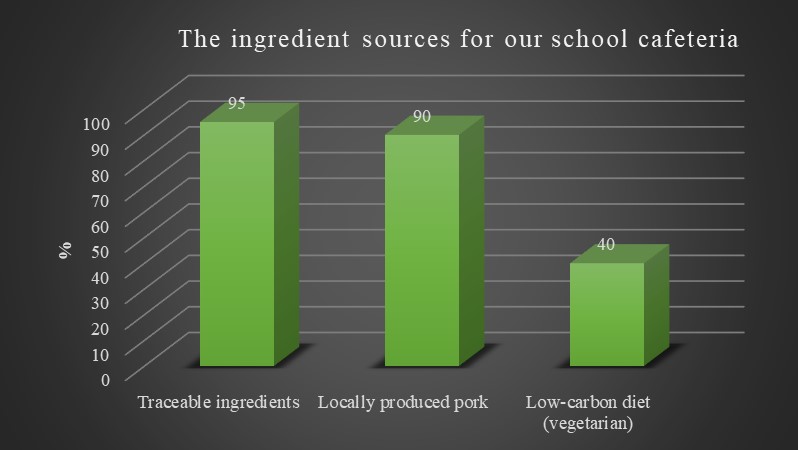
A healthy and high-quality diet is essential to the well-being of the people, while environmentally friendly farming practices ensure the sustainability of our planet. Taiwan has actively promoted food and agriculture education in recent years, strengthening the connection between diet, the environment, and agriculture. In 2021, the Food and Agriculture Education Act was passed, and the NTNU has played a crucial role in this initiative, dedicating efforts to integrating food and agriculture education into the school curriculum. Professor Lin Ru-Ping from the Department of Human Development is one of the key contributors. Since 2018, she has served as a review committee member for the Ministry of Agriculture’s “Food and Agriculture Education Promotion Project” and, starting in 2022, as a member of the “Food and Agriculture Education Promotion Committee.” She has also been commissioned by the Ministry of Agriculture to integrate food and agriculture education into the 12-year national curriculum, tailoring the “Food and Agriculture Education Teaching Manual” for school teachers. This manual provides lesson plans and teaching guidelines, assisting schools at all levels in implementing sustainable resource use and environmentally friendly practices through food consumption.
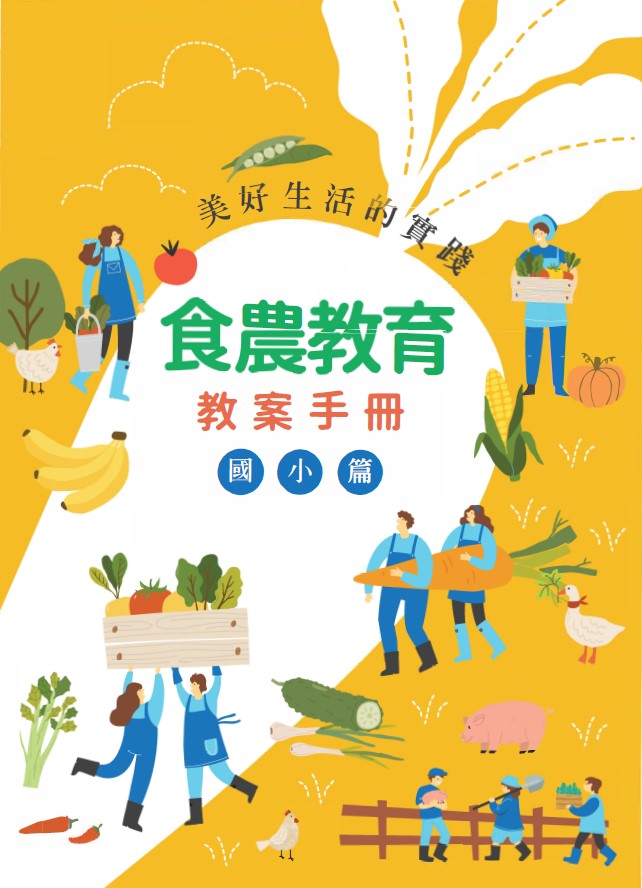
15.2.3 Maintaining and Expanding Biodiversity in the Current Ecosystem
The NTNU has three campuses: Heping and Gongguan in Taipei City and Linkou in New Taipei City. The Taipei campuses span approximately 22 hectares. Despite being in the urban center with limited space, aside from school buildings and sports facilities, the rest of the campus is designated green space. That includes preserving old trees and planting diverse and rich vegetation. The use of chemical pesticides is also prohibited to create a safe and friendly habitat for urban wildlife. For example, the Heping campus features areas like the Roman Plaza, Sunlight Boulevard, and Vienna Forest. Through the extensive planting of trees, plants, and lawns, these spaces create green oases on campus, helping to regulate the microclimate while providing high-quality recreational areas.
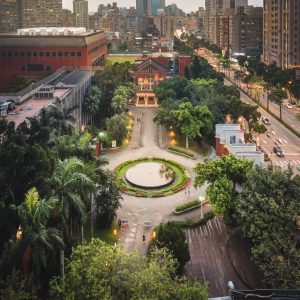
The Gongguan Campus, on the other hand, features the European Park and an artificial wetland. The wetland is designed to purify wastewater from the campus, treating and recycling it for reuse, making it a rare and rich ecological zone within the city. The area boasts over 50 species of trees, shrubs, flowers, and aquatic plants, with higher densities of birds and insects than other locations. The sounds of frogs, cicadas, insects, and birds create a small yet vibrant and serene ecosystem that serves as a vital urban wildlife habitat. The ECO team, composed of students from the university’s Graduate Institute of Environmental Education (now the Graduate Institute of Sustainability Management and Environmental Education), has maintained the wetland for years, using it as a base for educational and experiential activities. They lead surrounding schools in learning about wetland environments and invasive species issues, making the wetland an essential venue for environmental education. It was also selected as a demonstration site for the United Nations’ “Education for Sustainable Development” initiative in 2006.
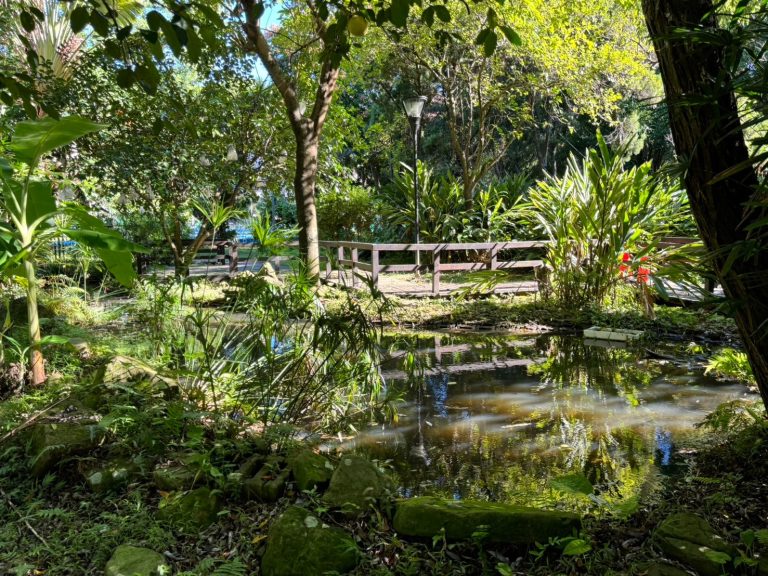
The Linkou Campus spans approximately 32 hectares and follows a multi-layered ecological greening concept. Habitats for flora and fauna are enhanced through the development of the campus environment, contributing to biodiversity. Upon entering the campus, one is greeted by a vibrant landscape of shady trees and lush grass. Additionally, areas such as a lotus pond, courtyard garden, and artificial lakes have been thoughtfully designed to enrich aquatic habitats for plants and animals. With green spaces accounting for 43% of the campus, it has earned the nickname “NTNU’s Secret Garden.”
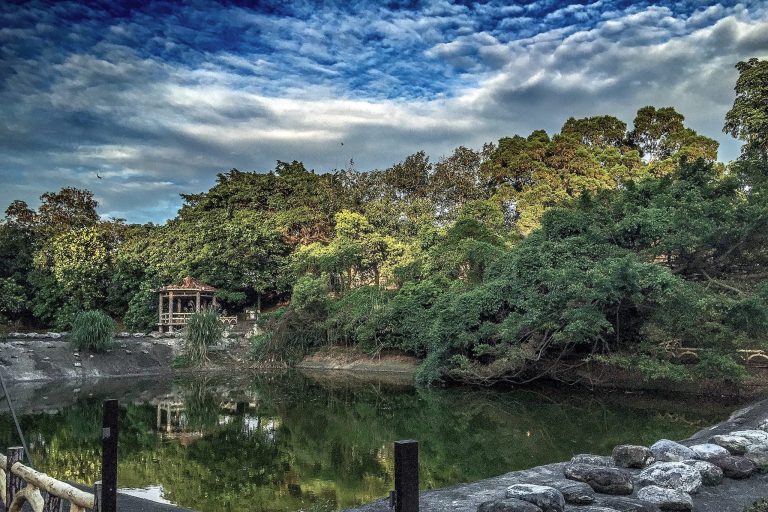
15.2.4 Ecological Education Program
The University also carries the mission of promoting science education to the public and has long organized outreach activities related to biology and ecological conservation, such as the “Life Science Exhibition,” which offers free educational games, hands-on experiences, research presentations, and special lectures. These activities give the public valuable knowledge about science and ecological conservation, fostering greater environmental awareness. Programs like the “Happy Bat Life Science Camp” for elementary students and the “NTNU Summer Life Science Camp” for high school students offer a range of biology courses, lab experiments, outdoor ecological tours, and night observations, giving participants a close-up view of wildlife while imparting the importance of ecological cycles and the value of life. The NTNU Life Science Museum, which opened in 2022, offers free, reservation-based tours to the public. It showcases significant plant and animal specimens and teaching research artifacts collected over the years. The museum also integrates service-learning courses by recruiting and training student volunteers to provide comprehensive guided tours, helping visitors understand the importance of biodiversity and sustainable resource use.
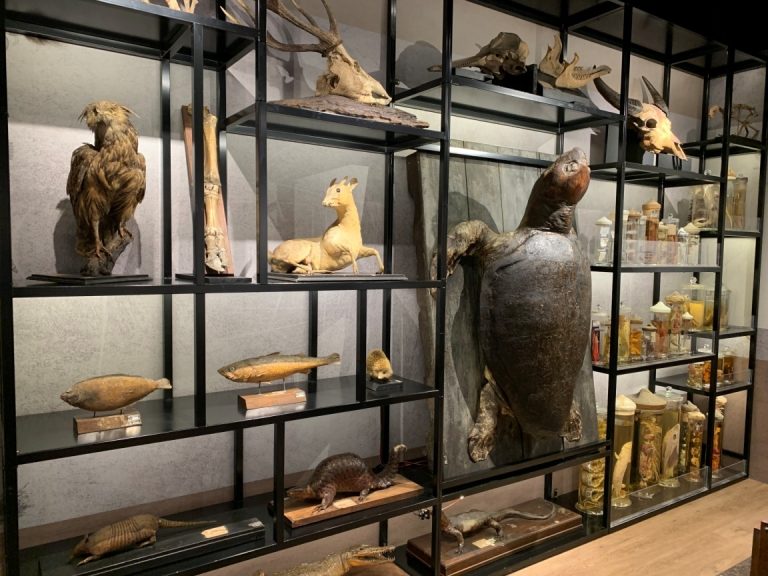
As a critical institution for teacher training in Taiwan, the University plays a crucial role in cultivating biology teachers for secondary education and outstanding scholars in plant and animal taxonomy and ecology. Since 2012, it has collaborated with Academia Sinica to establish the “International PhD Program in Biodiversity.” This program focuses on biodiversity and evolutionary research, developing a wide range of research topics to nurture local wildlife and ecological studies experts.
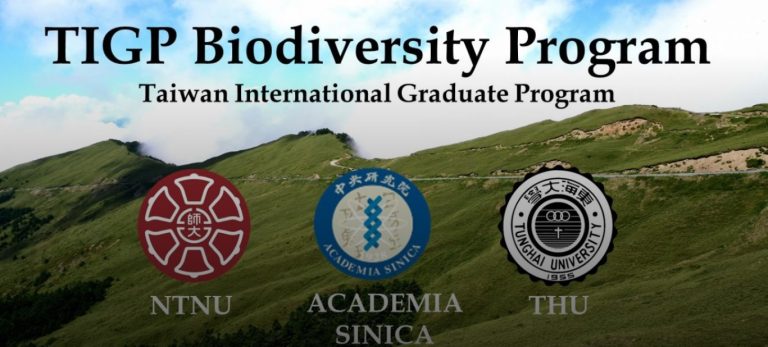
Mass media plays a crucial role in environmental education. In 2023, Professor Wei-Da Fang from the Institute of Sustainable Management and Environmental Education produced the ecological documentary Wild Wetlands with funding from the National Science and Technology Council. The documentary highlights the diversity of wetland ecosystems, focusing on themes such as alpine lakes, agricultural wetlands, river wetlands, and coastal wetlands. The film raises public awareness of the importance of wetland conservation by following the lives of several protected species, including wetland waterbirds and crab-eating mongooses. It has also been honored with the “Best of Best Award” by the East Asia Center of the Ramsar Convention and the Asia Chapter of the Society of Wetland Scientists.
15.2.5 Sustainable Management of Agricultural Land (Educational Outreach)
The University employs various educational outreach methods to help the public understand that managing land and the environment is fundamental to maintaining the proper functioning of ecosystems and fostering industrial development. It also collaborates with local organizations to explore new opportunities for agricultural development. As part of the Higher Education Sprout Project, the initiative “Enhancing Environmental Awareness Among Watershed Residents and Assisting Regional Development Plans” targets residents of the Feitsui Reservoir watershed, whose economic activities rely on agriculture and stream resources. The project promotes water resource and ecological education while fostering water conservation practices among the public. Additionally, supporting local industries within the watershed promotes sustainable development and revitalizes local communities. Key activities include:
- A visit to the “Sancai Lingzhi Ecological Farm” in Shiding District, where participants learned about the environmental characteristics of the ecological farm. Experts in environmental education and stakeholders shared their experiences, linking elements such as farm production characteristics, eco-friendly practices, crop management, and food safety. That led to developing local food and agricultural education programs and fostered collaborative learning between the community and nearby schools.
Promoting the concept of eco-friendly tea farming, activities such as “Tea Culture and Green Living Experience ” introduced the unique characteristics, production environment, and manufacturing process of Taiwan’s teas. Faculty, staff, and residents were invited to taste organic teas produced around the Feitsui Reservoir in the water source protection area, highlighting the importance of green living through the experience of tea culture.
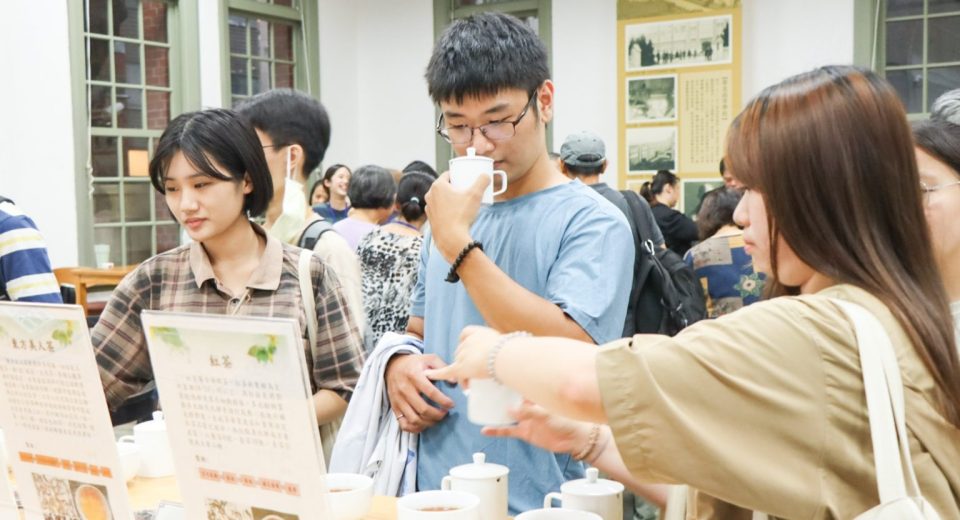

15.2.6 Sustainable Land Management in Tourism (Educational Outreach)
The University leverages its research and educational expertise to support sustainable land management, ecological education, and eco-tourism. Through academic research, it identifies the challenges the tourism industry faces and proposes policy recommendations and management solutions.
1. The “Hiking Impact Assessment and Leave No Trace Advocacy Program” focuses on Shoushan National Nature Park. The program assesses the environmental impacts of hiking by conducting on-site observations, distributing questionnaires, and conducting interviews. It also promotes the Leave No Trace (LNT) principles through well-designed activities and evaluates the program’s effectiveness, providing management strategies and solutions to mitigate these impacts.
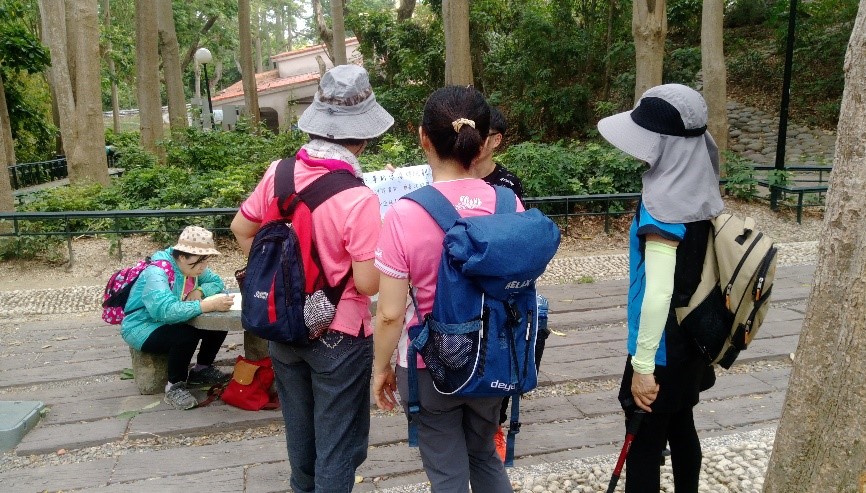
2. The study, “Research on Environmental Changes in Chaojing’s Coral Reefs and the Ecological Impact and Adaptive Behaviors of Recreational Divers,” aims to develop a localized diver training curriculum over the course of three years. This research will explore the key factors contributing to divers’ adoption of eco-friendly behaviors. Additionally, a “Citizen Science Program for Coral Reef Monitoring and Marine Debris Removal” will be established, encouraging public participation in addressing the challenges faced by the ocean.
15.3.1 Sustainable Land Use, Protection, and Restoration (Policy)
1. The university is located in a highly developed urban area, but it still actively creates biological habitats to maintain biodiversity. The ratio of green cover on campus reaches 48%. The newly opened student dormitory certified as the Silver Level Candidate Green Building, was designed with a policy of sustainable use, conservation, and restoration of land. Its design highlighted actively promoting planting and greening, water permeability of the site to avoid urban flooding, and linking the eco-system with the Xindian River. In addition, the building implemented energy-saving for lighting and air conditioning and installed rainwater recycling equipment.
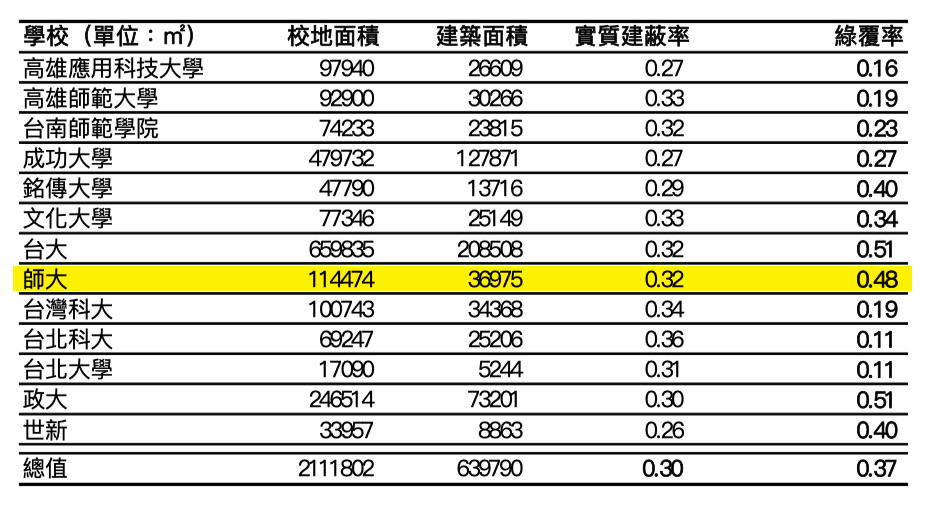
2. The NTNU has long been committed to promoting sustainable development. Although located in an urban center without forests, mountains, or arid lands, the University implements environmental and land protection through various aspects such as campus ecological restoration, environmental health and safety, green low-carbon dining, and energy-saving and carbon-reduction practices. These efforts aim to build a sustainable campus and develop a green university. In 2023, the University was awarded the “Excellence in Campus Environmental Management” by the Ministry of Education. Moreover, several faculty members currently serve as committee members in various government agencies (as listed in the table below). Through their involvement in reviewing terrestrial and coastal development projects and in environmental policy decision-making, they provide scientific and objective expert advice to contribute to the sustainable use of land and biological resources.
List of University Faculty Serving on Government Environmental and Ecological Committees in the Past Two Years
委員會職稱 | 教師姓名 | 任職系所 | 聘期 |
內政部國家公園計畫委員會委員 | 王文誠教授 | 地理學系 | 112/3/1~114/2/28 |
內政部海岸管理審議會委員 | 林宗儀教授 | 地理學系 | 112/1/1起 |
李素馨教授 | 地理學系 | 113/1/1起 | |
李佩珍教授 | 生命科學系 | 113/1/1起 | |
海洋委員會海洋野生動物保育諮詢委員 | 方偉達教授 | 永續管理與環境教育研究所 | 113/1/3~115/1/2 |
臺北市政府環境影響評估審查委員會 | 李佩珍教授 | 生命科學系 | 112/1/1~113/12/31 |
-768x512.jpg)
15.3.2 Monitoring IUCN and Other Protected Species (Policy)
1. The Department of Life Sciences of NTNU has a long history in the research and conservation of endangered species, and has long been invested in the genetic mechanisms, life patterns and ecological monitoring of important species. Professor Lin is currently the chairman of the Raptor Research Group of Taiwan, promoting the conservation of raptors through research and education. Previously collaborated with the Forest Service to monitor and film the crested goshawk (Accipiter trivirgatus), a second-level protected animal, that appears around our campus. Subsequently filmed a documentary and held workshops to promote the importance of raptor conservation.
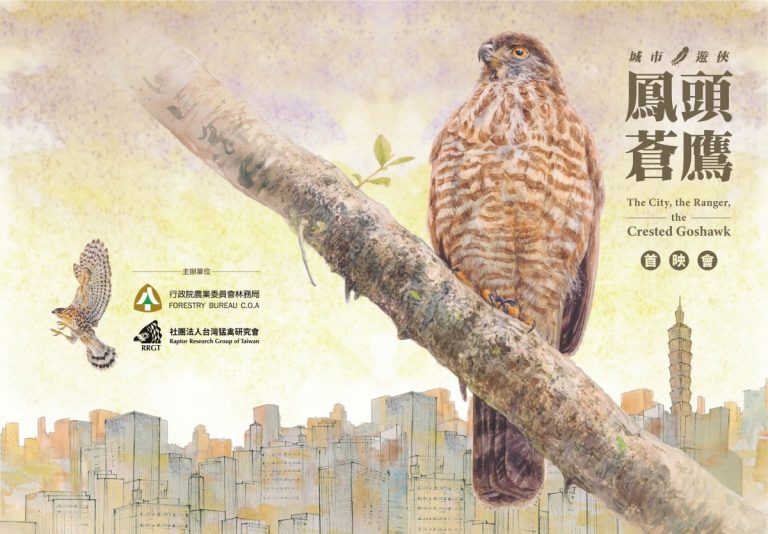
2. Although the NTNU is located in an urban center and does not host species listed on the IUCN Red List or Taiwan’s list of protected species within the campus, the University has always been present in the efforts to conserve biodiversity. It has been deeply involved in research on crucial wildlife and terrestrial ecosystems and ecological conservation. For instance, Professor Emeritus Lü Guang-Yang has conducted extensive studies on the Yellow-throated Marten (Class III Protected Species), the Least Weasel (Class III Protected Species), and the Formosan Serow (Class III Protected Species). Since 1979, he has led students from the College of Life Sciences in researching the physiology, reproduction, and ecology of Taiwan’s five native salamander species. These long-term monitoring efforts aim to protect these vulnerable species from habitat destruction and global warming, putting them at risk of extinction. Due to his contributions, he is often called the “Father of Taiwan’s Salamanders.”
These five salamander species inhabit high-altitude mountain regions and are all endemic to Taiwan. In the 2017 Red List of Taiwan Amphibians, the Nanhuta Salamander was categorized as “Critically Endangered (CR),” while the Taiwan Salamander, Chou’s Salamander, and Guanwushan Salamander were assessed as “Endangered (EN).” The Alishan Salamander was classified as “Vulnerable (VU).” All are essential conservation species within their ecosystems.
-1.jpg)
3. Professor Xu has long focused on studying existing and extinct butterfly species in Taiwan. He has published findings on 14 new species, including Taiwan’s endemic butterflies and subspecies, as well as 15 new moth species, five of which have been proposed as indicator species for the conservation of Taiwan Beech forests under the Cultural Heritage Preservation Act. In addition to publishing several butterfly-related book series, he serves as a review committee member for the “Expert Panel on Conservation of Insect Species” and the “Taiwan Butterfly Red List.” Professor Xu actively promotes butterfly conservation education to raise public awareness of butterfly preservation by collaborating with private conservation organizations. His significant contributions to butterfly research in Taiwan earned him the 2023 “Forestry and Nature Conservation Award,” often called the “Green Oscars.”
-2-768x512.jpg)
15.3.3 Integrating Local Biodiversity into Planning and Development
The university’s development strategy aims to establish a green university, prioritizing ecological considerations in campus planning and design. For instance, the design of Dormitory II, located along the Xindian River, incorporated the riverbank and green corridors as critical elements of its living spaces. Regarding green building evaluation, the selection of plant species, green area, and planting conditions all met the greening index requirements, earning the building a candidate for Silver-Level Green Building Certification. Similarly, the International Student Dormitory, which began construction in 2023, is located in the Taipei metropolitan area but strives to maximize green space in its design. By incorporating multi-layered shrubs, vines, and slope vegetation, the project enhances the urban landscape’s greenery while promoting the development of local biodiversity.

15.3.4 Minimizing the Impact of Invasive Species (Policy)
The University adheres to national policies and guidelines to mitigate the threat of invasive species. It implements preventive measures, monitoring, and pest control for common invasive insects found on campus, such as the lychee stink bug and red imported fire ants. Taking the lychee stink bug as an example, the following management practices are followed:
1. If traces of the insect are found on campus, the frequency of inspections will be increased to detect and remove eggs at an early stage.
2. Monitor pest outbreak seasons and timing to ensure proper environmental management.
3. When lychee stink bug eggs are detected, physical and chemical control methods will be used to prevent further damage to campus plants and potential harm to human health.
In addition, the University has commissioned the Forestry Research Institute to conduct health inspections, monitor campus trees, and improve their overall health. Educational outreach programs for faculty, staff, and students will also be undertaken to raise awareness of pest prevention and control.
-768x573.jpg)
15.3.5 Collaboration for Shared Land Ecosystems
The University, situated in a fully developed urban area, promotes campus ecological initiatives and actively fosters partnerships to maintain healthy ecosystems.
Various departments also leverage their research and educational expertise to actively engage in environmental education and local revitalization efforts throughout Taiwan. That includes training local guides and environmental management professionals and developing localized environmental education materials and methods. For example, through the “2023 Central Region Geopark Management Guidance and Network Exchange Project,” the team assists geoparks by conducting resource inventories, providing guidance, support, and consultation to local communities, and assisting with applications, evaluations, and interpretive staff training.
The “Yilan Lunpi Tribe Action Research for Environmental Education” project focuses on indigenous traditional knowledge and innovative local practices. By understanding the unique natural and cultural resources of the area and how elders integrate traditional ecological wisdom into educational interpretation, the project aims to develop and implement environmental education strategies. Using action research methods, the team designs lesson plans that reflect the tribe’s characteristics, establishing Lunpi Tribe as a base for environmental education facilities.
Additionally, the University has collaborated with various organizations on a project supported by the Forestry and Nature Conservation Agency to promote forest therapy and local revitalization. Using the rich forest environment of Hengshan and Wufeng townships in Hsinchu County as research bases, the project has held over 10 activities with more than 200 participants. The “Hengshan Forest Therapy Professional Training Program” also developed various forest therapy activities for Hengshan, fostering the local forest economy and training the first certified forest therapist in Hengshan, Hsinchu.
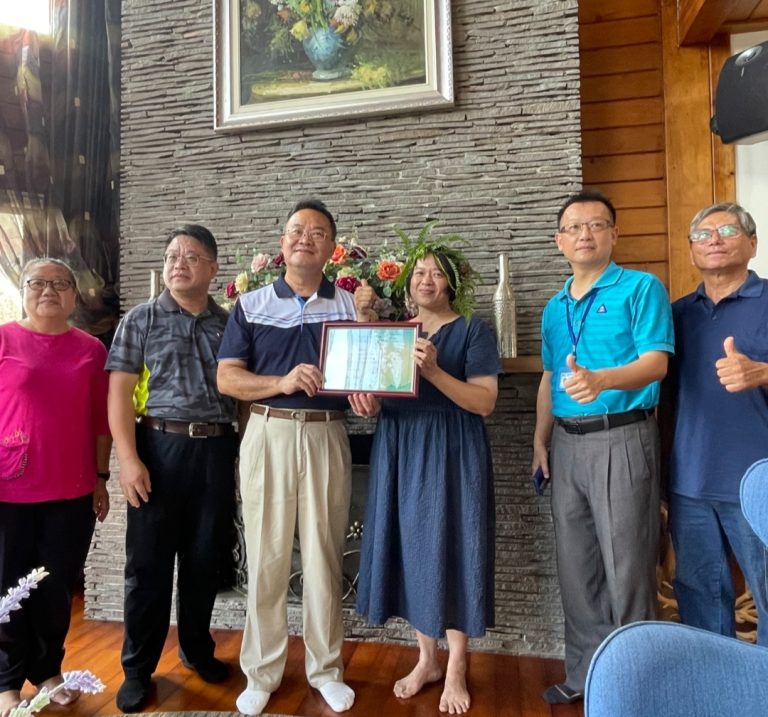
Since 2020, the University has collaborated with the Guzhuang Community Development Association near the National Taiwan Normal University to establish an Innovation Pavilion and Plastic Reduction Promotion Center. This initiative focuses on addressing the environmental harm caused by plastic waste. Together, the NTNU has extended plastic reduction efforts into the community, promoted the NTNU eco-friendly business district, and widely invited public participation in the “Sustainable Consumption Creative Proposal Contest.” The University aims to spread and implement environmental protection concepts through various means, all to preserve the ecosystem.
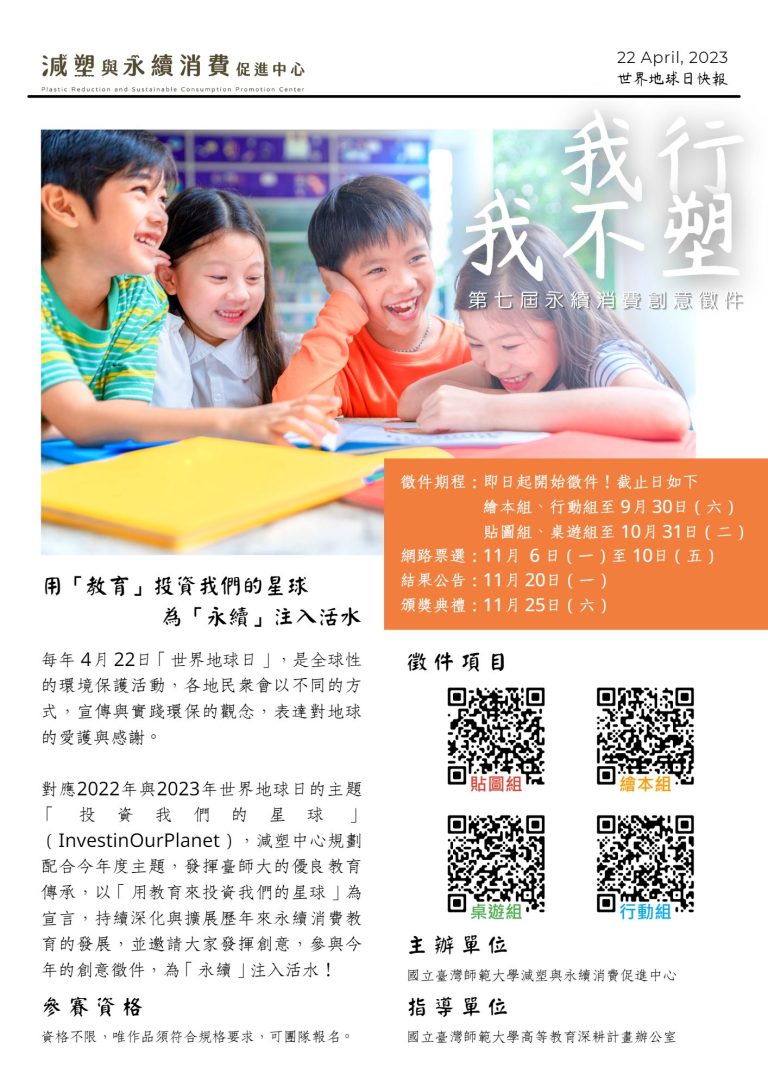
15.4.1 Drainage Guidelines and Standards
The university’s waste treatment follows its established general wastewater treatment procedures, which are supervised and managed by the General Affairs Office. General wastewater treatment is uniformly discharged into the Taipei City sewer system.
To ensure the sustainable use of water resources, the University has implemented the “Laboratory Hazardous Waste Management Guidelines” and strategies such as smart water conservation and gray water recycling to enhance water use efficiency and safety.
Firstly, the “Environmental Health and Safety Center” has been established to manage hazardous waste from laboratories. That includes classifying, storing, and labeling hazardous waste, maintaining storage areas, and coordinating waste disposal services. All procedures, including awareness campaigns and reporting, comply with the Ministry of Environment’s waste management regulations, ensuring the proper handling of hazardous liquid waste from laboratories.
Additionally, the “Environmental Protection and Safety Committee” supervises the implementation of regulations related to handling toxic chemicals in laboratory settings to ensure the complete and safe disposal of hazardous waste.
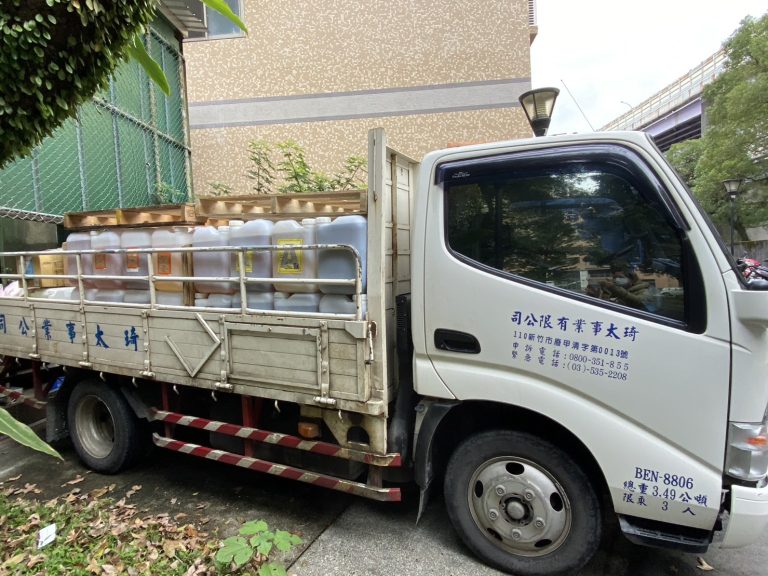
The University complies with government regulations regarding domestic wastewater by channeling wastewater through a systematic sewage pipeline, ensuring proper discharge into Taipei’s municipal sewage treatment system. After filtration, the treated water is integrated into the water resource recycling system, contributing to the sustainable management of water resources and river ecosystems. At the Linkou campus, the primary discharge is domestic sewage. Since the volume is below 800 cubic meters daily, it follows a combined sewer system connected to New Taipei City’s sewage system.
Since 2017, the University has led the way in water conservation by installing foot-operated faucets, achieving a water-saving rate of up to 40%. Smart water meters are also installed on campus to detect leaks and other irregularities actively. By monitoring real-time water usage and understanding overall consumption trends, the University can effectively manage water usage and optimize conservation efforts. Additionally, the Gongguan and Linkou campuses have implemented water reuse systems, including gray water and rainwater recycling systems used for irrigation and toilet flushing.

15.4.2 Policies for Reducing Plastic Waste
The University adopts a source reduction, sorting, and recycling policy for plastic waste while promoting plastic reduction efforts through education and community participation. The details are as follows:
- Since 2017, the University has prohibited the free provision of single-use utensils.
- As of July 2019, the use of plastic straws on campus has been banned in accordance with the Environmental Protection Administration’s regulations on “restrictions on the use of single-use plastic straws. “
- The “NTNU Plastic Reduction Guidelines” were established in 2021, with administrative offices and meetings leading the way in reducing and eliminating the use of plastic and single-use products on campus.
- In 2022, the NTNU has implemented measures to “reduce the use of disposable utensils and bottled water” for its meetings, trainings, and events. Discounts are offered for those who bring reusable cups to on-campus chain beverage stores, and the campus fruit store has partnered with UCUP for a reusable cup borrowing and returning system with a points reward program.
- From 2022, the Sustainable Development Office has promoted the “Just Re-cup It” campaign for faculty, staff, and incoming students. Participants who pledge to reduce their use of 100 disposable cups will receive a limited edition reusable cup, encouraging the entire campus community to join the zero-waste lifestyle.
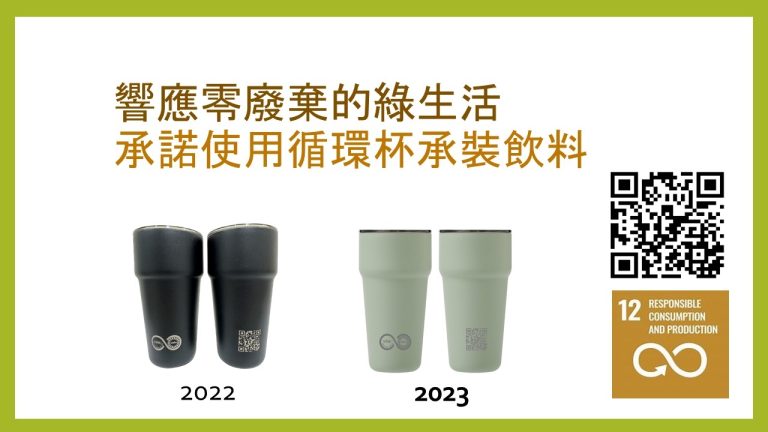
In addition, the University established the “NTNU Plastic Reduction Promotion Center” as early as 2017 (renamed in 2022 to the “Plastic Reduction and Sustainable Consumption Promotion Center”). The center has been actively engaged in promoting plastic reduction and sustainable consumption. Through social media platforms such as Facebook and Instagram, the center supports plastic reduction concepts and produces the podcast “How to Recycle It,” which covers environmental issues and plastic reduction knowledge in daily life. To reach a broader audience, this podcast is available on multiple platforms, including Firstory, KKBOX, Spotify, Apple, and Google Podcasts. The center collaborates with communities and other organizations to promote plastic reduction by organizing activities such as plastic-free markets, street and beach cleanups, and workshops. Additionally, through teacher training sessions, the center demonstrates and promotes sustainable consumption of board games and teaching materials it has developed, hoping to encourage the public to adopt a more sustainable lifestyle.
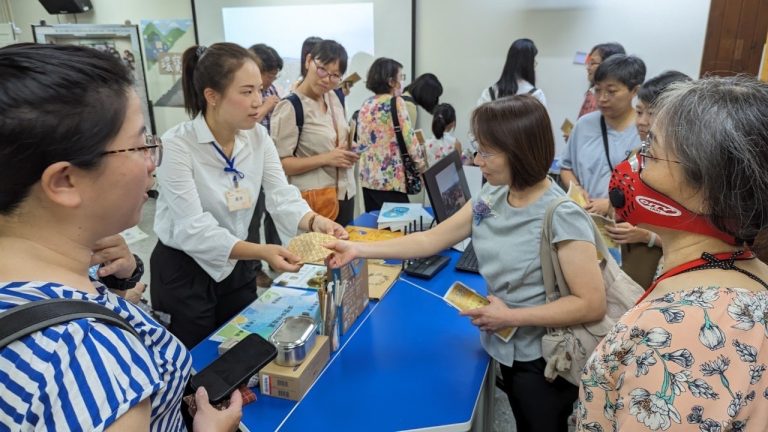
15.4.3 Hazardous Waste Disposal Policy
For hazardous waste disposal, the University has established the “Principles for the Management of Hazardous Industrial Waste in Laboratories,” which covers the classification, storage, labeling, maintenance of storage sites, outsourcing of waste removal, promotion, and reporting. These processes are all conducted according to the regulations set forth by the Ministry of Environment’s Waste Disposal Act. Additionally, regular occupational safety and health training is provided to faculty, staff, and students, and a self-assessment system is implemented for laboratories, requiring them to submit a report at least once a month to ensure that hazardous waste is managed correctly.

In line with the commitment to the Talloires Declaration and to fulfill higher education’s social responsibilities and missions, the NTNU initiated and established the Taiwan Green University Alliance in 2012. To further the vision of developing a sustainable campus, the University has set forth execution strategies and goals and signed the “Environmental Safety and Health Declaration,” affirming its commitment to continuously improving environmental safety, health, and disaster prevention awareness.
